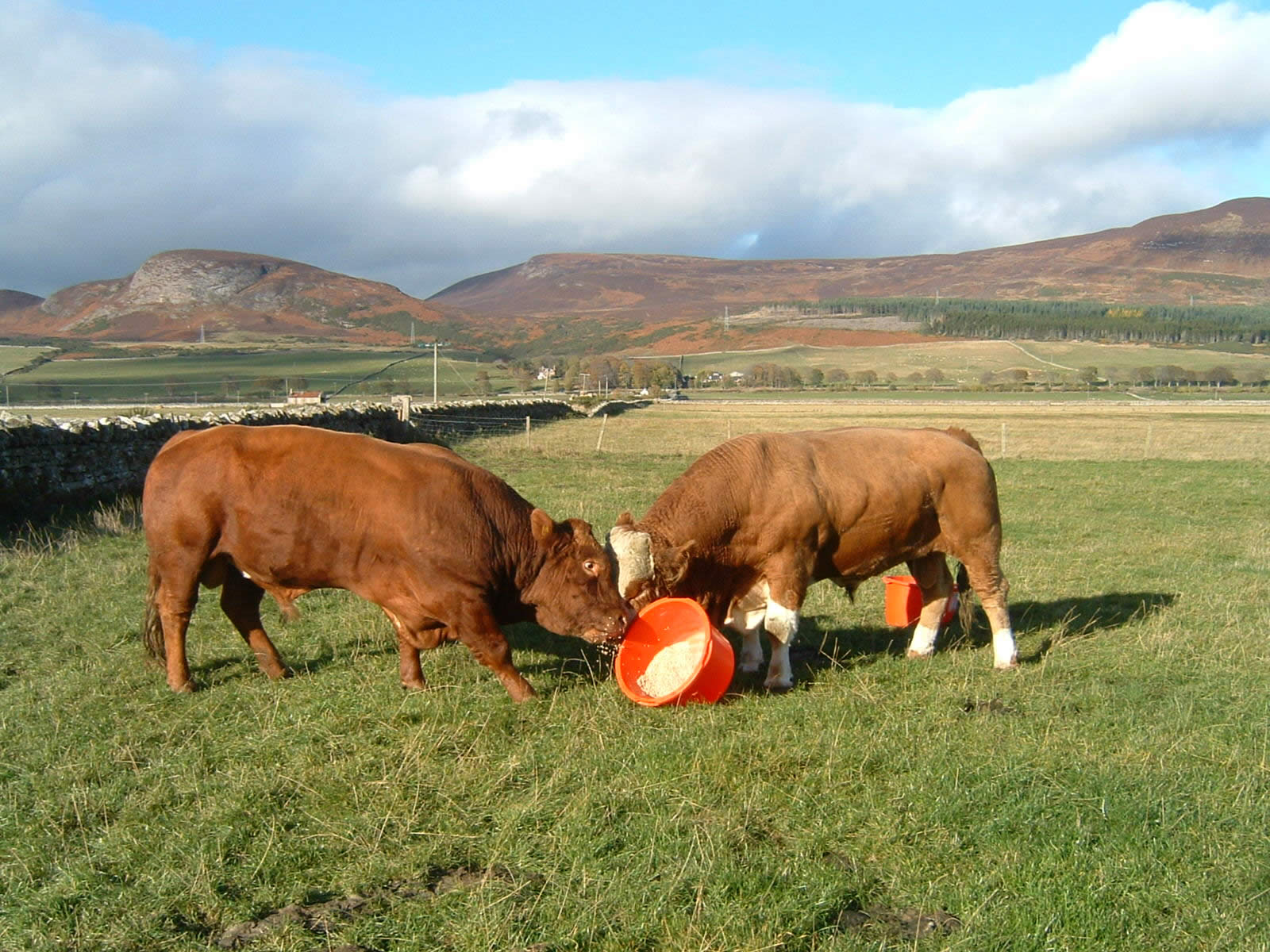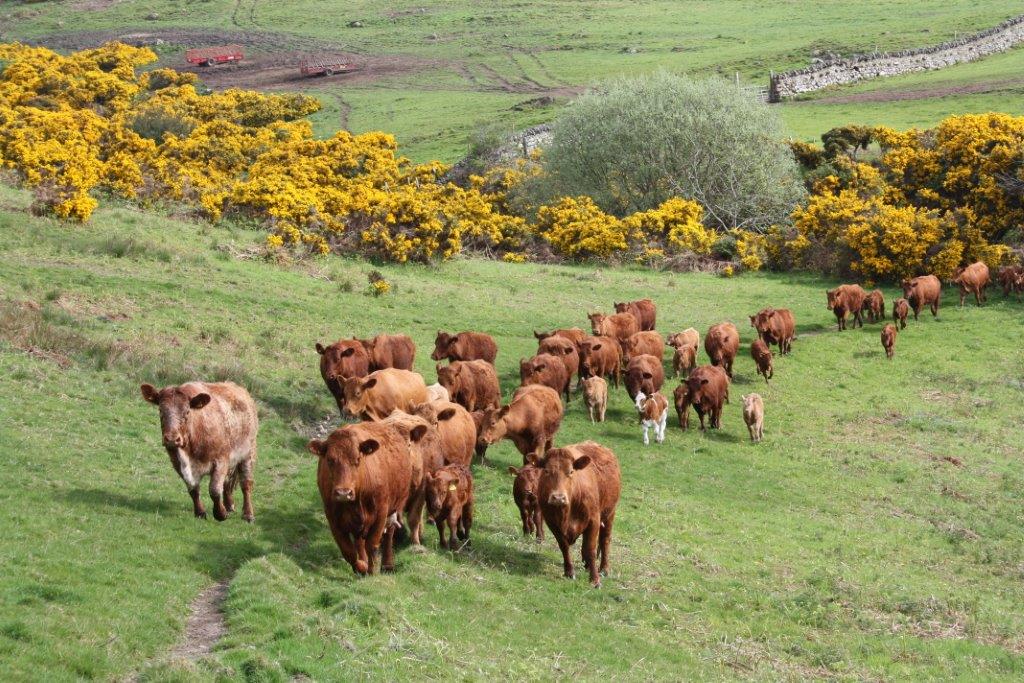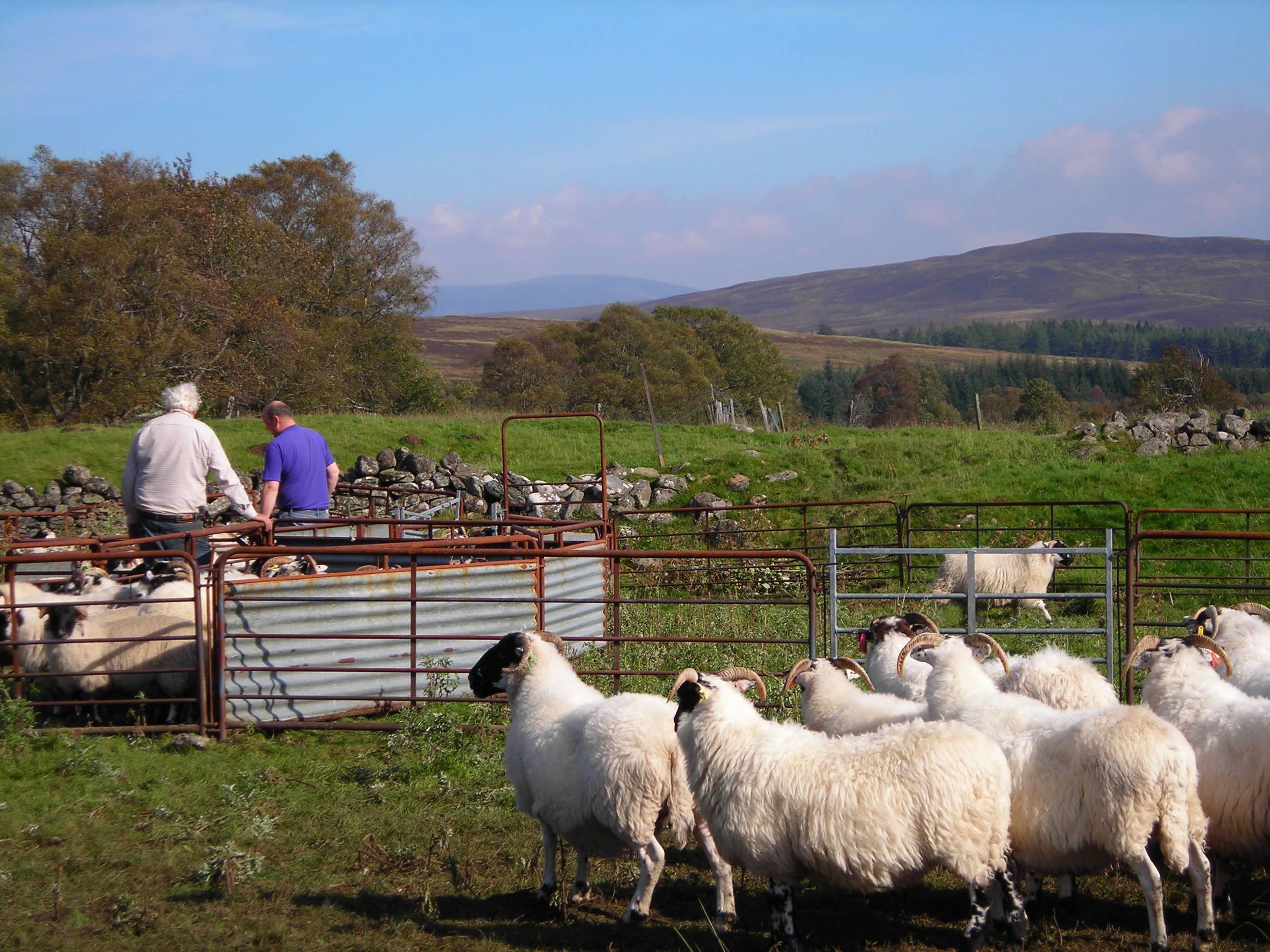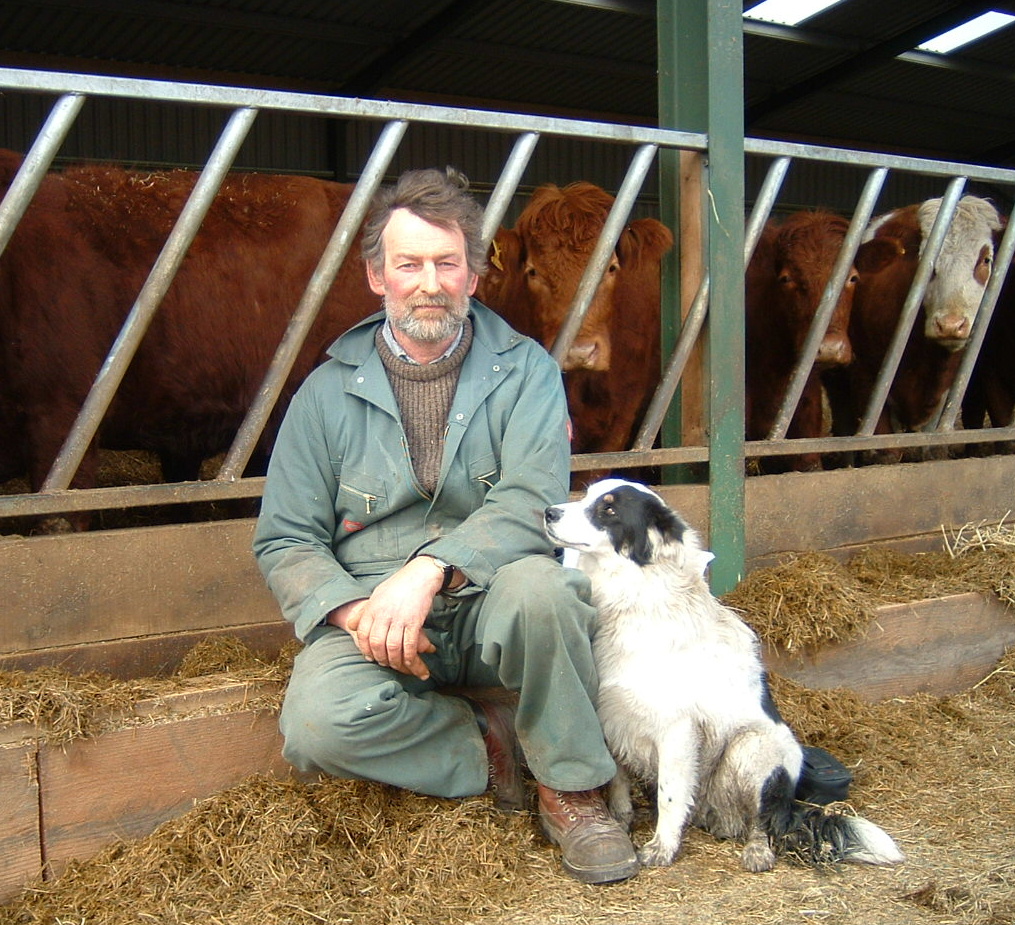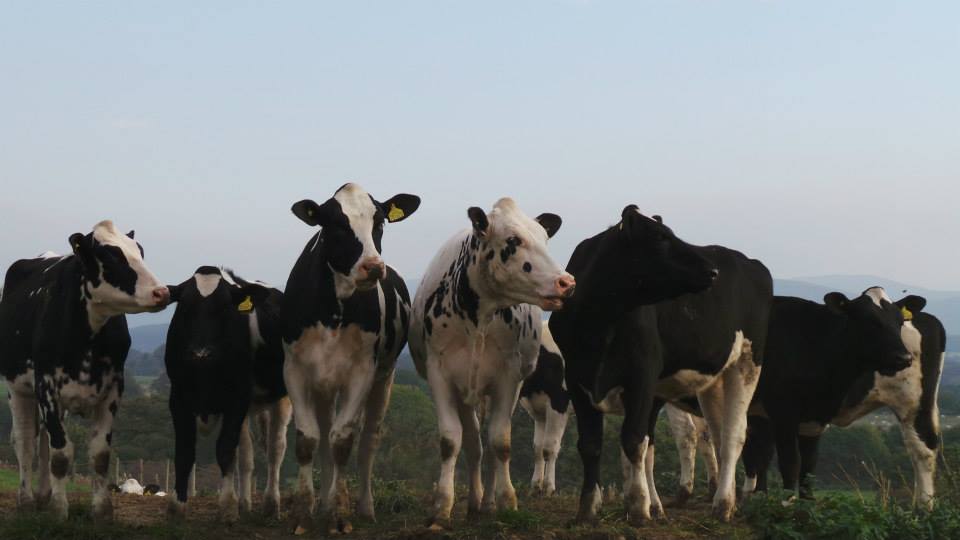Apr
4
2014
STFA survey of members gives a clear mandate for land and tenancy reform
The Scottish Tenant Farmers Association recently met with the Agricultural Holdings Legislation Review Group (AHLRG) to put forward an initial submission based on their recent survey of members. The results and analysis of the survey show an increasingly strong desire amongst tenants to see land and tenancy reform in Scotland: A previous NFUS survey of tenants in 2001 showed 58% support for ARTB; the STFA survey shows support for ARTB remaining at 58%, but there is now a further 26% support for a conditional right to buy for tenants.
After meeting with the AHLRG, STFA chairman Christopher Nicholson commented: ‘It is clear that the current tenancy legislation is failing to provide a platform which can support the high levels of investment in infrastructure required for businesses to remain competitive in modern agriculture. The survey shows that 46% of tenant respondents have had no landlord investment in the last 10 years, and 85% believe that as tenants they will not receive fair compensation for their improvements at way-go. These results point to an unhealthy state of affairs in the tenanted sector which require solutions beyond tinkering with the existing legislation.
“An analysis of the survey results show that landlord investment is the key factor that creates healthy tenancies. The 13% of respondents with landlords willing to make investments when necessary have attitudes, experiences and relationships which set them apart from the remaining 87%; they are 4 times more likely to have a good relationship with their landlord, twice as likely to have diversified, and 3 times more likely not to have had a diversification project objected to by their landlord.”
“Recognising impasse in the tenanted sector, the STFA are developing proposals for the use of ARTB in cases where there is a clear public interest argument. We also propose that secure tenancies become freely assignable which would put tenants on a more level playing field with owner occupiers with regard to ability to invest in their holdings as well as providing access to holdings with secure tenure for new entrants moving into and through the sector.”
With an assignable lease the value of the tenant’s improvements would be reflected in the value of the lease which if freely assignable could be used as a standard security with a bank. This would vastly improve a tenant’s ability to borrow, and for the first time allow a tenant to benefit fully from the value of his improvements. Furthermore, instead of relying on compensation for improvements from a reluctant landlord at way-go, the tenant would have the option to assign their leases for value to a third party.
STFA are also addressing other areas of tenancy reform including replacing the open market rent test with a test which is based on the earnings potential of the farm, and widening family succession and assignation to all family members.
Commenting on the future of the tenanted sector Christopher Nicholson went on to say: “In the event of the Scottish Government introducing ARTB it is highly likely that not all tenants will buy their farms and there will be a continuing need for a tenanted sector and so it is vital that we identify and remedy current shortcomings. As well as recommending legislative change STFA has also proposed the establishment of a Lands Commission or a Land Agency to take on the role of tenancy ombudsman to monitor the operation of the sector and act as an interface between landlord and tenant. We see this as key to the smooth operation of a future tenanted sector, an idea shared by 89% of respondents to the survey.
“Past efforts at tenancy reform have merely tinkered around the edges, and the time is now ripe for some root and branch change. The Review Group have a wide-ranging remit backed up by an ambitious programme of evidence gathering. We expect that this review will lead to the most far-reaching reform of tenancy legislation since 1949 and it is imperative that we get it right.”
Initial Analysis of STFA member survey
Summary
The results of the survey demonstrate a high level of frustration amongst tenants with a tenancy sector that is failing to provide a platform fit for modern agricultural businesses.
The survey revealed strong support for ARTB for 1991 Act tenants, with only 16% of members opposed to ARTB.
Similarly there was strong support for introducing freedom of assignation (84% support) or ring fencing tenancies (90% support).
These results, strong support for both ARTB and wider assignation, may at first appear to be antagonistic, however they both solve similar problems for tenants, and those who responded to the survey would have assumed that their pre-emptive RTB would still exist under wider assignation.
ARTB and freedom of assignation would both improve tenants’ confidence and ability to invest in their holdings due to: (i) Both measures would allow tenants to use the value of their improvements as collateral with banks thus improving access to finance; (ii) both measures remove the worry tenants have as to how fair their compensation for improvements will be at way-go, because they would have the option of sell freehold to a third party if they had bought their farms, or sell their leases with their improvements if they had freedom of assignation; (iii) and both measures would allow tenants to have control over succession decisions for their businesses.
Analysis
Through cross tabbing of the questions asked in the survey, it is possible to analyse the survey results to see which criteria have the greatest influence on the success and wellbeing of a tenant’s business.
1. Landlord Investment
| Question 27. Has your landlord invested in the farm over the last 10 years? |
|
| Answer Options |
|
| Yes, when necessary |
13%
|
| Occasionally when he has to |
41%
|
| Never |
46%
|
| |
|
|
|
|
|
By analysing responses according to how tenants answered this question it is clear that the 13% of respondents who have landlords who are willing to make regular investments in the holding when necessary have attitudes, experiences and relationships which set them far apart from the remaining 87%. This criteria, whether or not a landlord invests, appears to have the greatest influence on landlord/tenant issues.
These 13% of respondents with landlords who invest regularly are:
- 4 times more likely to oppose ARTB,
- 4 times more likely to have good landlord relationships,
- 12 times more likely to believe that they will receive fair compensation for improvements at way-go,
- Twice as likely to have diversified,
- 3 times more likely not to have had a diversification proposal objected to,
- Are more likely to have a resident factor instead of factoring by outside agents.
These are significant differences which show that in the relatively few cases where landlords are investing the tenants have significant advantages and better experiences in running their businesses.
Nevertheless, there were some strong similarities between the 3 groups of respondents to Question 27; irrespective of whether or not their landlord invested, all tenants showed equally strong support for wider family succession, open assignation or ring fencing, and changes to the rent test to remove the open market criteria and base rents on what the farm is capable of producing.
Interestingly, the 13% with landlords who invested showed the strongest support for a Lands Commission to act as a tenancy ombudsman, possibly because they had personal experience of the tenancy system working well under fair conditions.
2. How the tenant is factored
| Question 34. Who does most of the factoring |
|
|
|
|
|
|
10%
|
|
|
39%
|
|
|
51%
|
This appears to be the next most important factor to influence landlord tenant issues. The 51% of respondents who are factored by outside land agents are:
- More likely to support ARTB
- Least likely to have an interested eligible successor
- Least likely to have had landlord investment in their holdings
- Least likely to have diversified
- Twice as likely to have had permission to diversify denied
- Most likely to have a poor relationship with their landlord.
- More likely to have grass lets as opposed to SLDTs or LDTs
It is interesting to note that although resident factors would appear to foster healthier tenancies, tenants with resident factors show the strongest support for a blanket ARTB for all 1991 Act tenancies as opposed to a qualified ARTB. This is probably due to resident factors remaining on only the larger estates, where due to the concentrated ownership of land tenants show greater support for more diverse land ownership
3. Length of time family have been on main holding
| Question 3. How long have you or your family been farming the main farm? |
|
| Answer Options |
|
| 0-10 years |
|
| 11- 20 years |
6%
|
| 21-50 years |
22%
|
| 50- 100 years |
52%
|
| Over 100 years |
20%
|
This criteria, length of time on holding, appears to have had little effect of responses except for the 20% who have been on their main holding for over 100 years who are:
- More likely to support ARTB
- Least likely to have had landlord investment
- Most likely to have had objections of diversification proposals
- Least likely to believe that they will receive fair compensation for improvements at way-go
- Least likely to have good landlord relationships
The differences observed with the ‘over 100 years’ group may be due to their leases being pre 1949 leases where Section 5 (landlord fixed equipment obligations) does not apply resulting in less obligations from the landlord to invest.
4. Type of tenancy
| Question1. What type of tenancy do you have? (Tick more than one box if you have multiple tenancies) |
|
| Answer Options |
|
| 1991 secure tenancy |
84%
|
| 1991 Limited Partnership tenancy |
13%
|
| Limited duration tenancy |
11%
|
| Short Limited Duration tenancy |
9%
|
| Seasonal lets |
16%
|
| |
|
|
|
|
|
Looking at differences according to type of tenancies there appears to be consistent and strong support from all tenancy types for land and tenancy reform, ARTB, ring fencing tenancies, and the creation of a Lands Commission.
It is interesting to note that support for a Lands Commission is strongest from LP, SLDT & LDT tenants, possibly because they are in the weaker positions when disputes arise.
There appears to be no difference in landlord’s investment across tenancy types.
As noted in (2) above, in the case of newly let land, SLDTs and LDTs are favoured by resident factors while grass lets are favoured by outside land agents.
5. Type of farming
| Question 2. How would you describe your farm? (tick more than one box if necessary) |
|
| Answer Options |
|
| Arable |
|
| Livestock |
|
| Dairy |
|
| Mixed lowland |
|
| Mixed upland |
|
| Hill |
|
| |
|
|
|
|
|
Looking at responses according to farm type there were no significant differences except for:
- Dairying was least likely to have landlord investment
- Hill farms are most likely to have had objections to a diversification proposal
- Hill farms are the least likely to have a diversification
The diversification situation on hill farms probably results from increased opportunities for wind and hydro projects compared with lowland farms, and these types of renewable diversifications are often strongly opposed by landlords.
By tfadmin •
Uncategorized •

